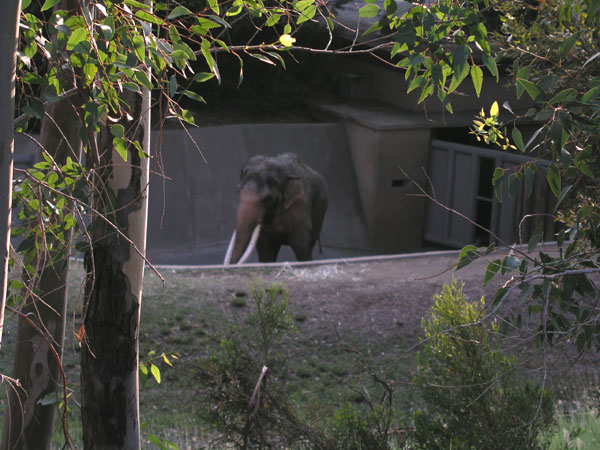
and here's a non-dancing elephant:
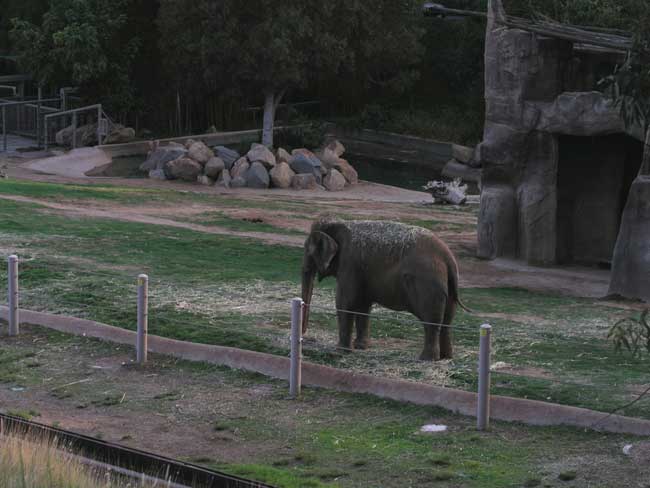
On our way to Condor Ridge, we passed a dancing elephant - perfectly amused dancing around with trunk swinging and
oblivious to our presence. It's hard to detect the dancing from a picture, so you'll just have to trust me on this one.

and here's a non-dancing elephant:

The Condor Ridge exhibit included several cages in addition to the one for the condors. Here are some owls - Western Burrowing Owls, to be exact. The guide has the following description:
Western Burrowing Owl
Athene curicularia hypugaea
Western burrowing owls are unique birds that feed primarily on insects. Truly the farmer's friend, these small owls fall victim to efforts to reduce rodent and insect populations. They inhabit deserted burrows dug by tortoises or ground squirrels.The burrowing owl is capable of making various vocalizations. For example, the male gies a two-syllable "who-who" to attract a female or protect his territory. A juvenile will project a rattlesnake-like buzz when threatened in the burrow.
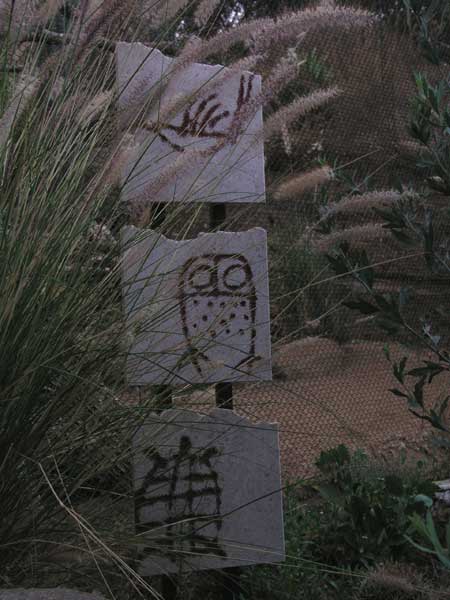
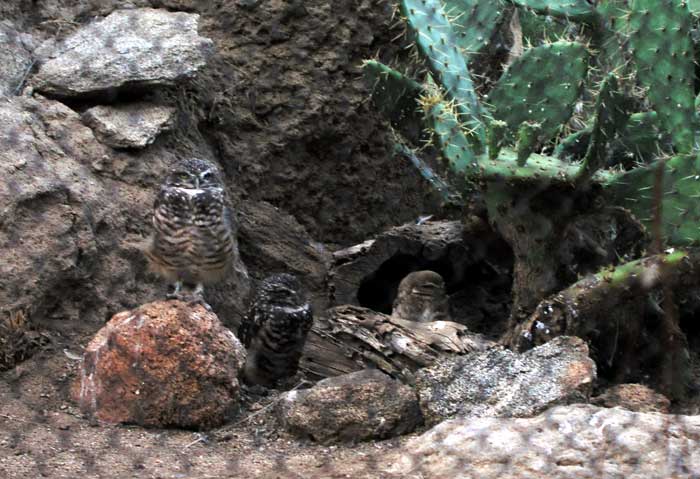
Here's a the California condor:
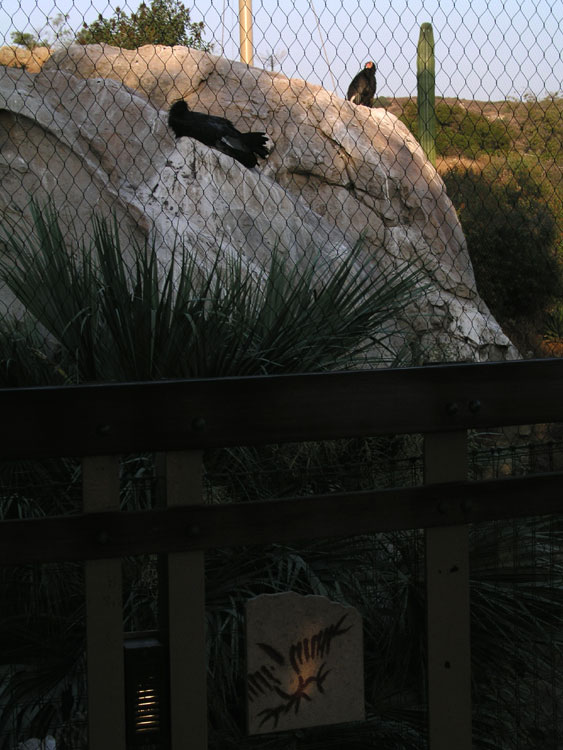
Info from the guidebook:
California CondorNext to the condor was a baby bighorn sheep, who desperately wanted to get to the tree in the condor pen.
Gymnogyps californianus
We are the largest birds in North America, with wingspans reaching 9 1/2 feet. We can soar the sky's thermals for hours, travelling 200 miles in a single day. We are not hunters. We must find food, called carrion - animals that have already died or been killed by other animals.A condor will weigh 18 to 24 pounds as an adult.
Adults will form a breeding pair bond, possibly for life.
Young condors are dependent on their parents for over a year, and they mature at 5 to 6 years of age.
The condor was first listed on the endangered species list in 1967.
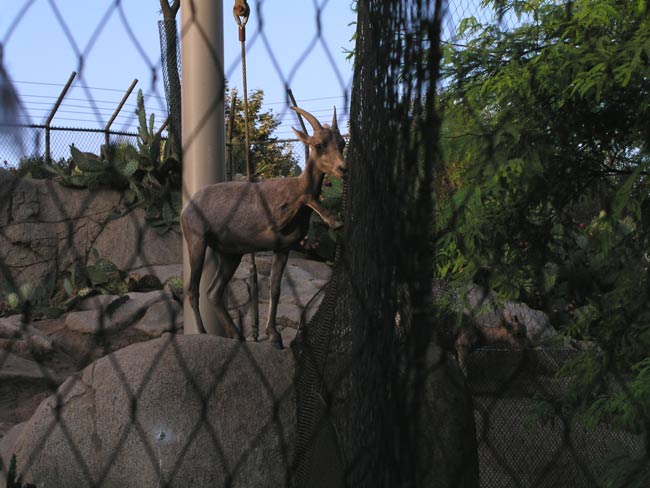
Desert Bighorn Sheep
Ovis canadensis nelsoni
The desert bighorn sheep in the Wild Animal Park's Condor Ridge exhibit are members of a subspecies different from the sheep that live in the California mountains (ovis canadensis cremnobates). This endangered animal has disappeared from 14 mountain ranges. California's population once numbered in the thousands, but only 600 survive within the state today.It can go without water for long periods of time and relies on moisture from plants such as cactus.
The outer edges of their hooves allow them to stand on a small rock face or boulder.
Excellent vision allows them to traverse mountainous terrain without falling.
Horns are used to establish pecking order, and usually the largest horned ram is dominant.
A bighorn ca weigh as much as 200 pounds.
Male rams will often run towards each other at 45 mph. The crack of their horns can be heard a mile away.
The Zoological Society of San Diego (ZSSD) supports efforts to recover this species through the participation of staff and veterinarians in counts and rehabilitation. ZSSD scientists are also studying bighorn DNS to see how they can help save the existing population.
From the exhibit, we had a great view of sunset over the safari area:
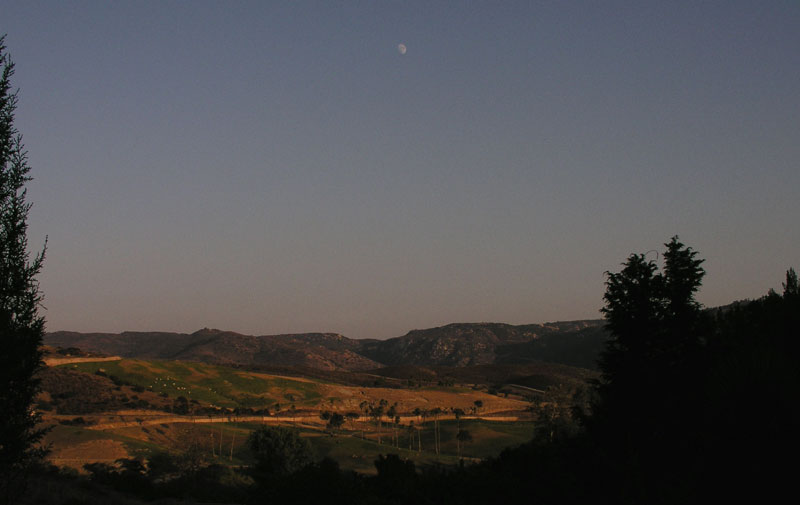
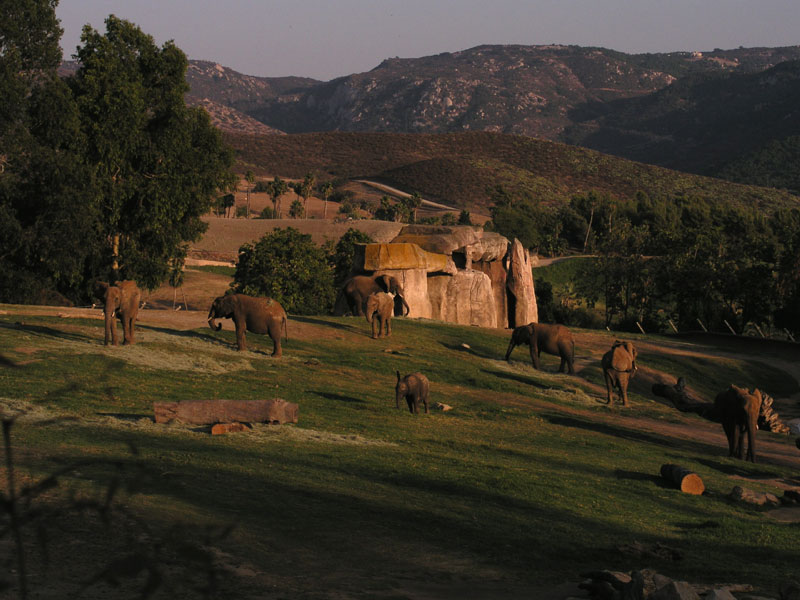
Elephants and the moon:
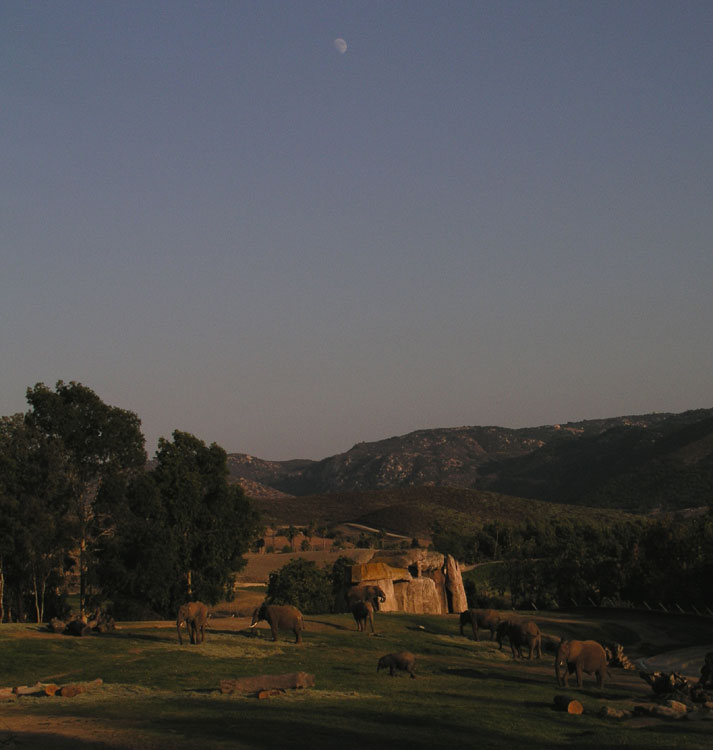
Here's the two Mike's:
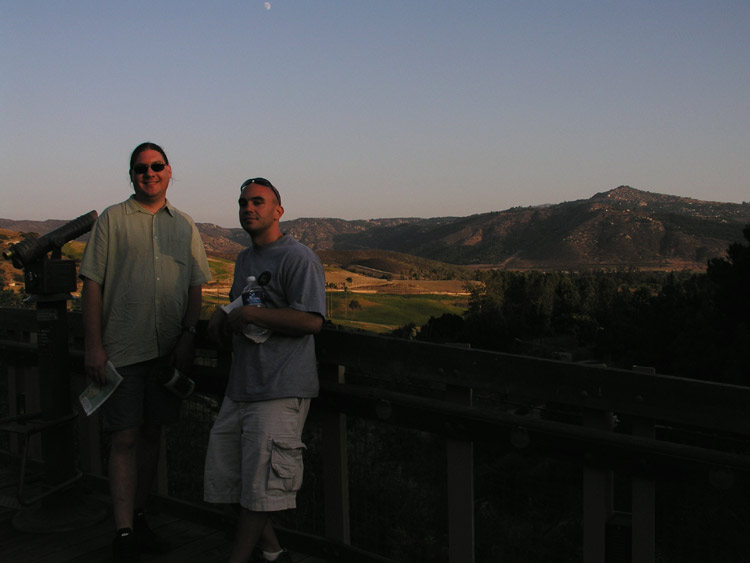
and a picture my brother took fo Mike and me.
